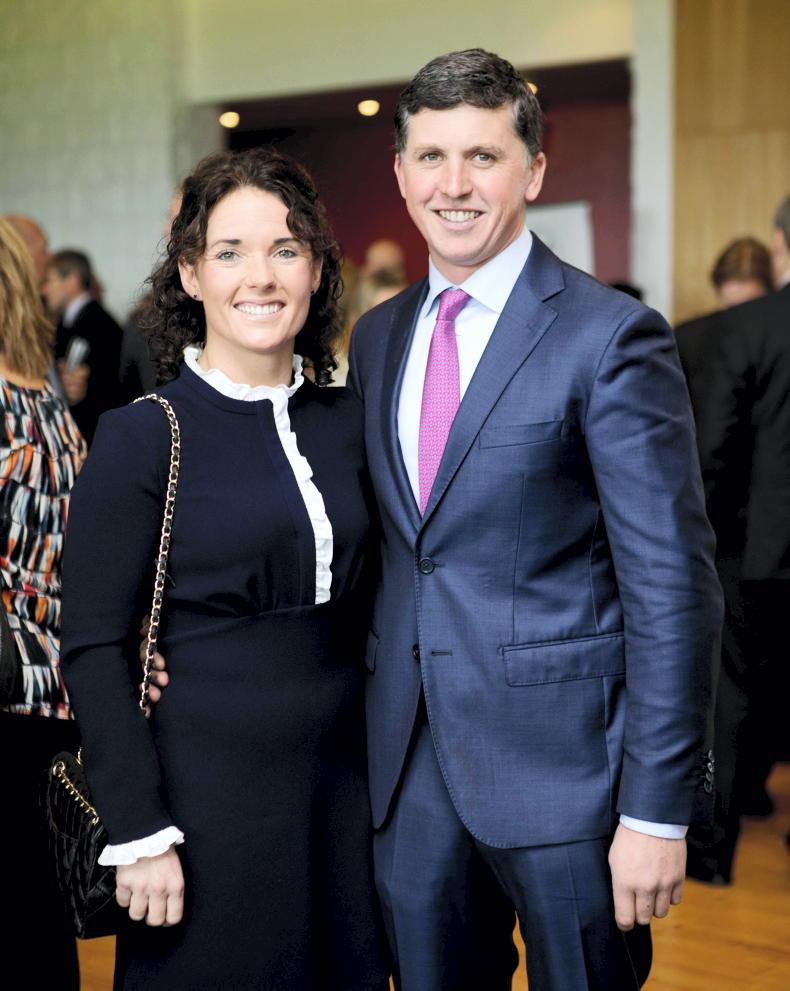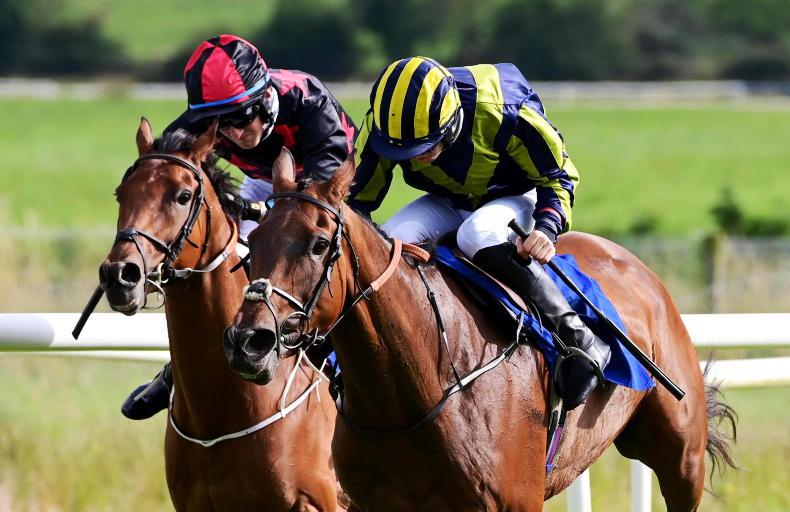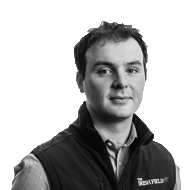LAST year was a good year for Ross O’Sullivan. In fact, it was easily his best year as a trainer, or indeed in racing.
He sent out 24 winners in all, 13 on the flat and 11 and counting this jumps season, a significant increase on his previous tallies in both codes.
A catalyst for both totals was a listed win for two three-year-old fillies.
Rocky Sky was the first. She won the Listed Salsabil Stakes at Navan by four and a half lengths and that was huge but it was also bittersweet. O’Sullivan brought her along to win a maiden at Dundalk and she became a top-class prospect when she won in Navan. Her owner/breeders, Mick and Catherine Kinane, said she wasn’t for sale but the offers just kept coming in. Eventually, they got one they couldn’t refuse and she was sold to America and now races for Chad Brown.
O’Sullivan describes it as “a bit of a rollercoaster.” On one hand he’d done his job for his client brilliantly and played a significant role in a presumably substantial profit. On the other hand, he lost a potentially top-class horse, and top-class horses are huge for trainers looking to make a name for themselves.
Sea Sessions was the second three-year-old filly to win a listed race for him, over jumps at Aintree in November. Both her and Rocky Sky’s cases are circumstantial, of course, but it was significant that when she was sold on after finishing second at Punchestown, she was kept in O’Sullivan’s yard by her new owner - the best of both worlds.

“Sea Sessions was a filly that came off the flat - Katie (Walsh, wife) bought her for small money out of a yearling sale,” O’Sullivan recalls. “She was consistent all year on the flat but when we went jumping with her, she loved it, and that makes a big difference. That can translate into a completely different standard of horse.
“Her current owner, John Robinson, is based in Manchester, and when we went over with her to Aintree, he had 10 of his friends there. Sure it was great to win, they all went bananas. For everything to come off - him to buy the horse and for her to go and win in Liverpool, it was fantastic and created a great profile for the yard.
“The next day, John brought us to the Man United - Crystal Palace game in Old Trafford. It was my first time in Old Trafford and we had great seats and everything. It was what I’d call a Carlsberg weekend!”
Kill
O’Sullivan has had a few Carlsberg weekends when you think of Rocky Sky and Baie Des Iles, who was a brilliant mare for him just as he was getting going from his new yard, based in Kill, Co Kildare.
Logistics-wise, this location is ideal. You can nearly hear cars from the M7 and you could be in Naas, Punchestown or the Curragh in 15 minutes or less. If you go the other way you’ll be on the M50 in 10 minutes and just across the road is Goffs.
The purpose-built yard is immaculate with a brand new modern style barn adjacent to a four-furlong Wexford sand gallop and a straight gallop. There are 45 boxes in all and 45 heads peer over their doors, while close by, a new house for O’Sullivan’s family is nearing completion.
He’ll be in the yard five years this September. His progress has been gradual, it was never going to happen overnight, but things clicked in 2021, which was something of a breakout year. The challenge now is to kick on again but he relishes that, and despite plying his trade in one of the toughest racing jurisdictions in the world, his ambitions are sky high.
“People always point to the firepower that Willie (Mullins), Henry (de Bromhead) and Gordon (Elliott) have and say how hard it must be to compete,” O’Sullivan says. “But I was an amateur rider for 10 to 12 years and I remember going down to Henry’s place one day a week and he only had 20 horses at the time. This was before Alan Potts came along and he was riding out himself. We rode out on a grass hill gallop which I believe is a woodchip gallop now and he has built on fabulous facilities since.
“Gordon is very similar, nothing was handed to him. I remember going up to him when he had a small yard in Kilcock. I went up to ride a point-to-point horse for owners I was linked with and I think it was just Gordon there with one other guy helping him. Gordon rode the lead horse for me in the schooling session we did over fences.
“Even Katie would tell you she remembers Willie driving into the yard in a jeep and horsebox to pick up Ruby so he could ride one of his in a bumper.
“So there are the three top jumps trainers in the country who started off very small. You’d have to take inspiration from them. I don’t think anything happens overnight in racing. You keep the head down and keep working away. You’re always hoping you’ll meet someone who’ll invest in the place and maybe you’ll get to the big boutique sales to buy those nice point-to-pointers.
“That is the way it’s gone - you need investment, especially in National Hunt, but it’s there for everyone to earn. You have to be positive, you have to be there, you have to get results. It’s the same when you’re riding, if you’re riding winners you’ll get rides and if you’re training winners you’ll get horses.
“Willie, Gordon and Henry are unbelievable and they have massive firepower but I always think of those occasions with Henry and Gordon before they got big. Look what a great job they’ve done.”
Background
It was always on the cards that O’Sullivan would work in racing. His mother and father met while working for Mick O’Toole and have been immersed in the game. Johnny O’Sullivan rode as an apprentice on the flat and then turned to the jumps and went on to ride the great mare Height O’Fashion for Tom Lacy. Anne O’Sullivan is an accomplished rider herself and rode a bumper winner for Con Collins.
They both went on to work for Kildangan Stud and Anne now works for the Irish Equine Centre, where, Robyn, Ross’s sister and wife of top amateur rider and Tattersalls Ireland representative Jamie Codd also works.
Ross himself worked and rode as an amateur in point-to-points and on the track. As soon as he finished school he went to work for Jessica Harrington, labelling his five years in Commonstown as his college course. He was there just after Space Trucker had finished up, when horses like Moscow Flyer and Macs Joy emerged, and it was a great experience.
“I think there might have been 90 horses there at the time and 85 of them might have been jumps horses, it’s headed the other way now. But at the time, Jessie was really expanding her team. When I left there were around 140 horses there and there could be over 200 now. It was a huge learning experience.
“Riding as an amateur was a huge help. I wasn’t a brilliant rider or anything but I met so many people and made so many connections. I have owners in here now that I rode for as an amateur.”
So what was the appeal to go training?
“We always had a horse or two at home along my home place at the Curragh,” O’Sullivan replies. “Then I suppose towards the end of my 20s I ended up getting a couple more, a few breakers and pre-trainers for people. Then it gradually developed into having a few more pointers for people.
“The first couple of years, I had five to 10 horses and it went very steady. I was renting a yard from Richard Pugh and then Paddy Osborne in Naas and then I rented a place at Denis Cullen’s because I was just getting a little bigger all the time. Now we have 45 horses.
“Look, it is a tough game. It’s a rollercoaster. Often you’d be hitting your head against the wall between injuries and things not working out. But I don’t think I’d do anything else. I love it. I think you get half addicted to it, like it’s an obsession at this stage. If I go away for two days I feel like I’m gone for two weeks. Katie often slags me if we go away, ‘ah, you’re boxwalking already!’

“I’m lucky Katie has seen it all and understands how it works. Obviously she has her breezers in her dad’s place and that’s her project but she knows exactly what’s going on here.
“We’re a little bit busier now with two kids (Stevie - two, Ted - three months) but she’s very much involved from day to day with the decisions of what’s going on. She’s a massive help and support - nearly more so when you’re having a bad day than a good day. It’s easy to support someone when they’re going well but if a horse gets injured or a horse that you fancy runs badly, she’s good that way.”
O’Sullivan is very much the modern trainer in that he operates more or less half and half between flat and National Hunt. He loves the challenge of both, acknowledging that the former is more financially viable but the love for the latter among the racing public is abounding.
Like any prospective trainer, he’s learned as he’s gone, keeping the eyes and ears open, and that’s very much still the case, perhaps even more so now.
“I thought when I was starting off that I knew what I was doing but I didn’t have a clue,” he proclaims. “But there is no better way of doing it than trial, error and practice. You’d always be looking at different ways to improve. I’d be friendly with Gordon and you’d be asking him questions and of what he’d do in a certain situation.
“The training community is very friendly and open - definitely in Ireland anyway, and definitely among the jumps trainers. I’ve often heard of trainers visiting other yards to try and learn something. Where else would you get that - you don’t see Jurgen Klopp heading out to Pep Guardiola’s training sessions.
“And all the time you’re trying to find a balance between replicating bits and pieces of what other trainers do and applying that to your training regime. The unique thing about Ireland and Britain, unlike Australia or America, is that a large majority of trainers are using their own unique gallop.
“You have to try different things. We’re here four years now and it has taken a while to get used to the gallops - maybe doing too much or too little with certain horses. So I feel like we’re on track now. Trial, error and practice - that’s what it’s all about.”
Standard
O’Sullivan is now making ground into a red-hot pace that is prevalent in Irish racing, on both codes. It has perhaps never been harder to train a winner here but he says that is something that shouldn’t be decried, but embraced.
“The standard is red hot,” O’Sullivan asserts. “Irish horses are now at a serious level. That’s why they do so well in England and further abroad. The investment levels have been huge. So when you train a winner, there is big satisfaction there.
“But is it any different than most other industries in the country? If you go and open a clothes shop in Naas, you’re taking on competitors that are actually next door to you on the street. I’d say the competition could be cut through there and the bigger players can buy their stock at an easier price so it’s not much different.
“We look at racing and say it’s very tough and very hard to compete in but I’d say no matter what level of business you’re in, running a local shop or whatever, it’s competitive no matter what.

“It’s the same with staff as well. I’ve a brilliant young team of staff here and they’re a huge part of what has gone right for us but you’d love to get a few more in, and that seems to be the case for a lot of trainers, but it’s not just in racing, that’s nearly in every industry in the country at the moment.”
The ambition now for O’Sullivan is to kick on again, improve on last year and keep delivering the results which have so far worked the oracle for him in attracting new owners. He sees the value of getting out and meeting people, the social aspect of networking to get new owners but at the end of the day, it’s all about results and that’s the focus. He’s already started 2022 with a winner when Paddys Planet (owner features on page 18) scored at Naas last Sunday.
“We just want to get better, keep improving,” he concludes. “I’ve a great base of owners. The dream is to have horses that are good enough to go and compete at Cheltenham, Aintree and Ascot.”


 This is a subscriber-only article
This is a subscriber-only article
 It looks like you're browsing in private mode
It looks like you're browsing in private mode









SHARING OPTIONS: